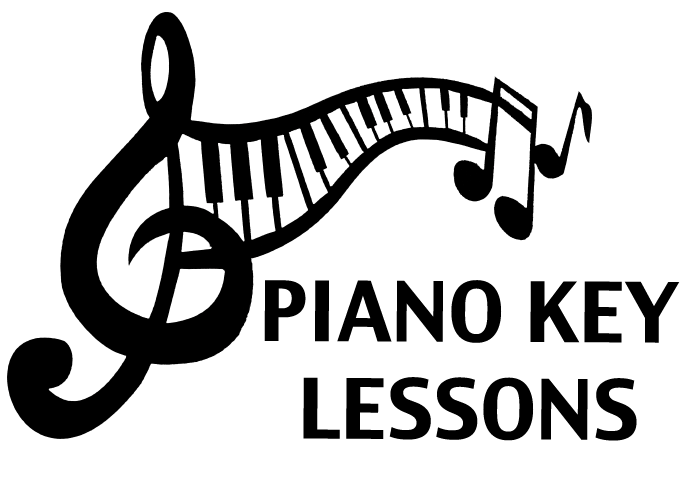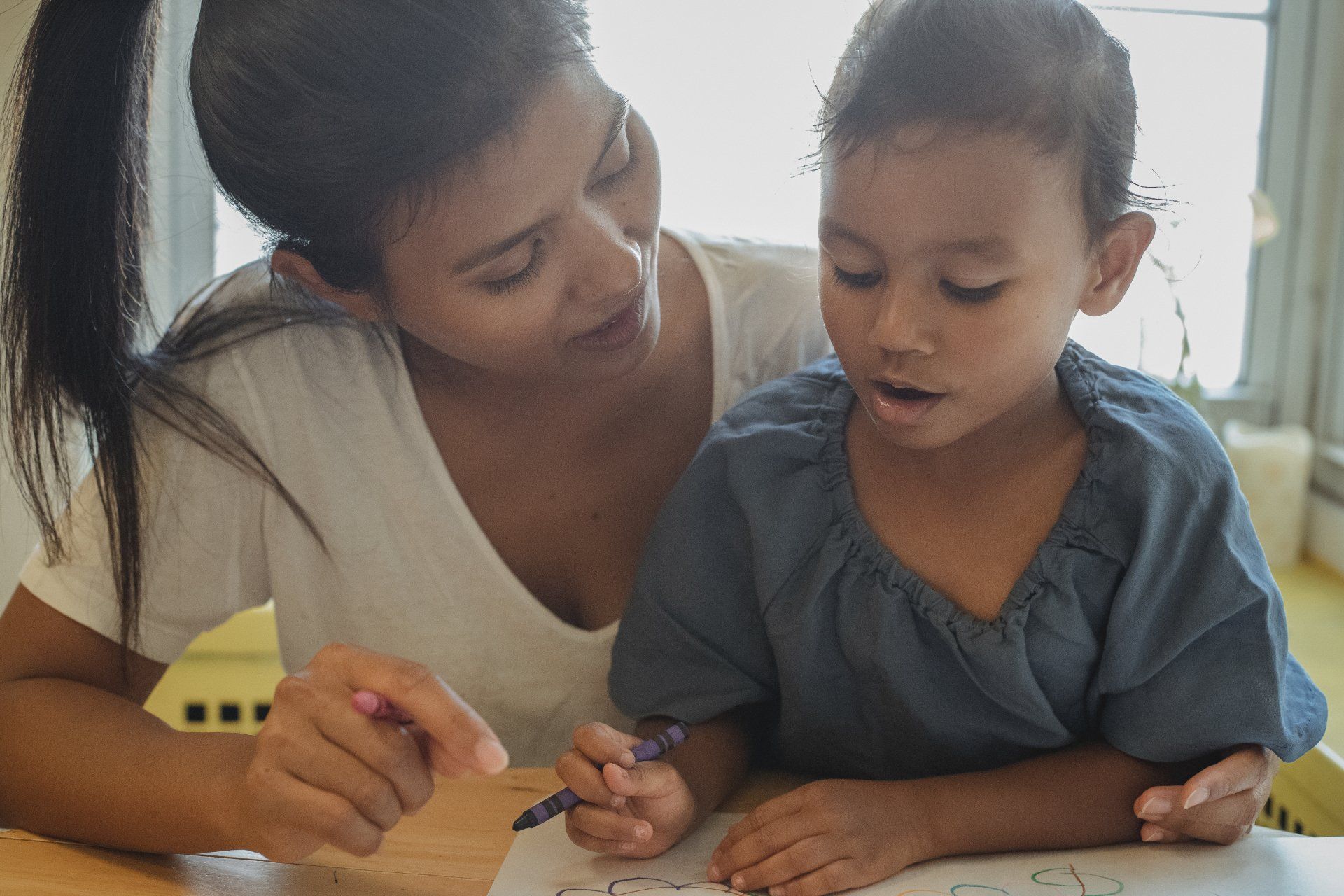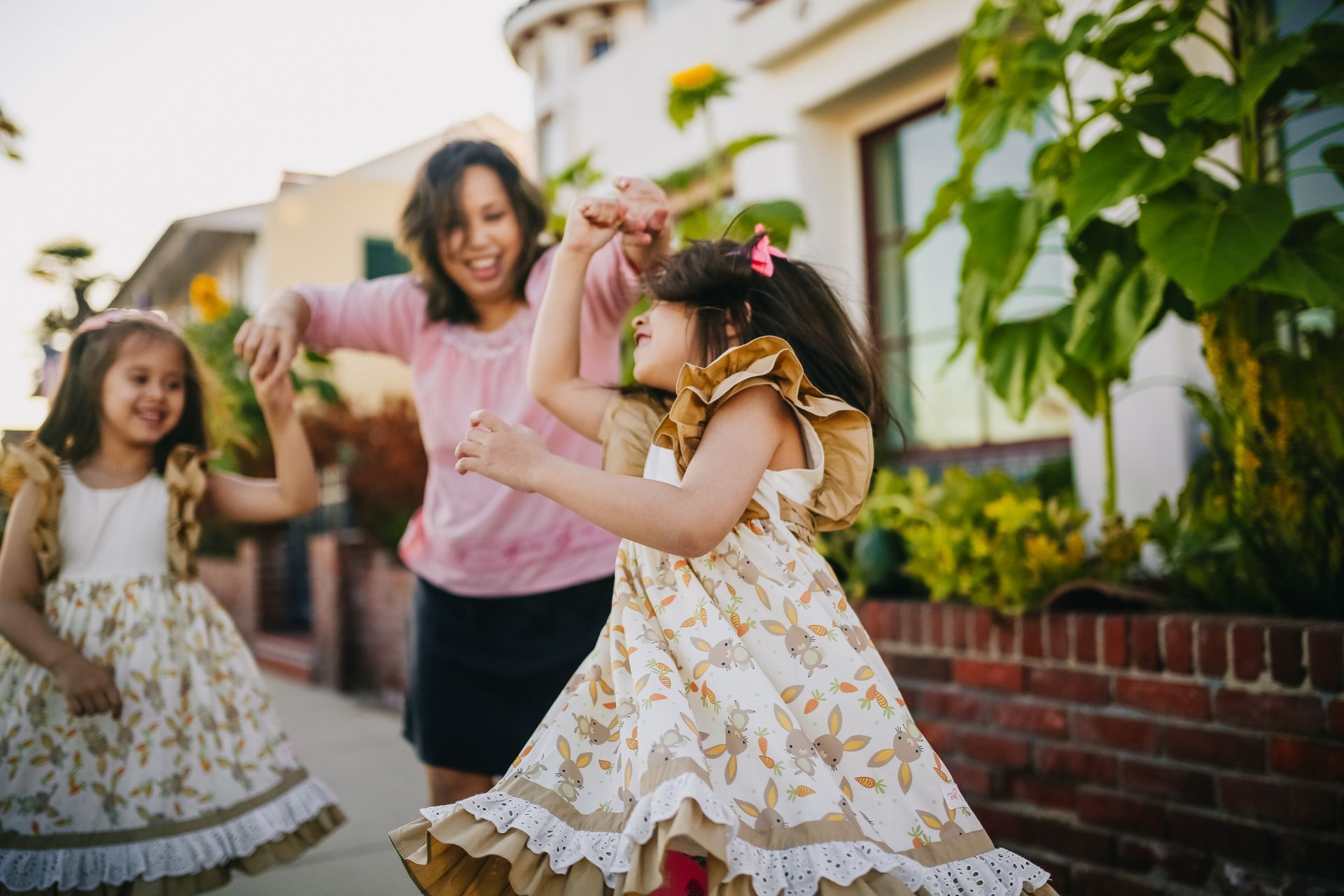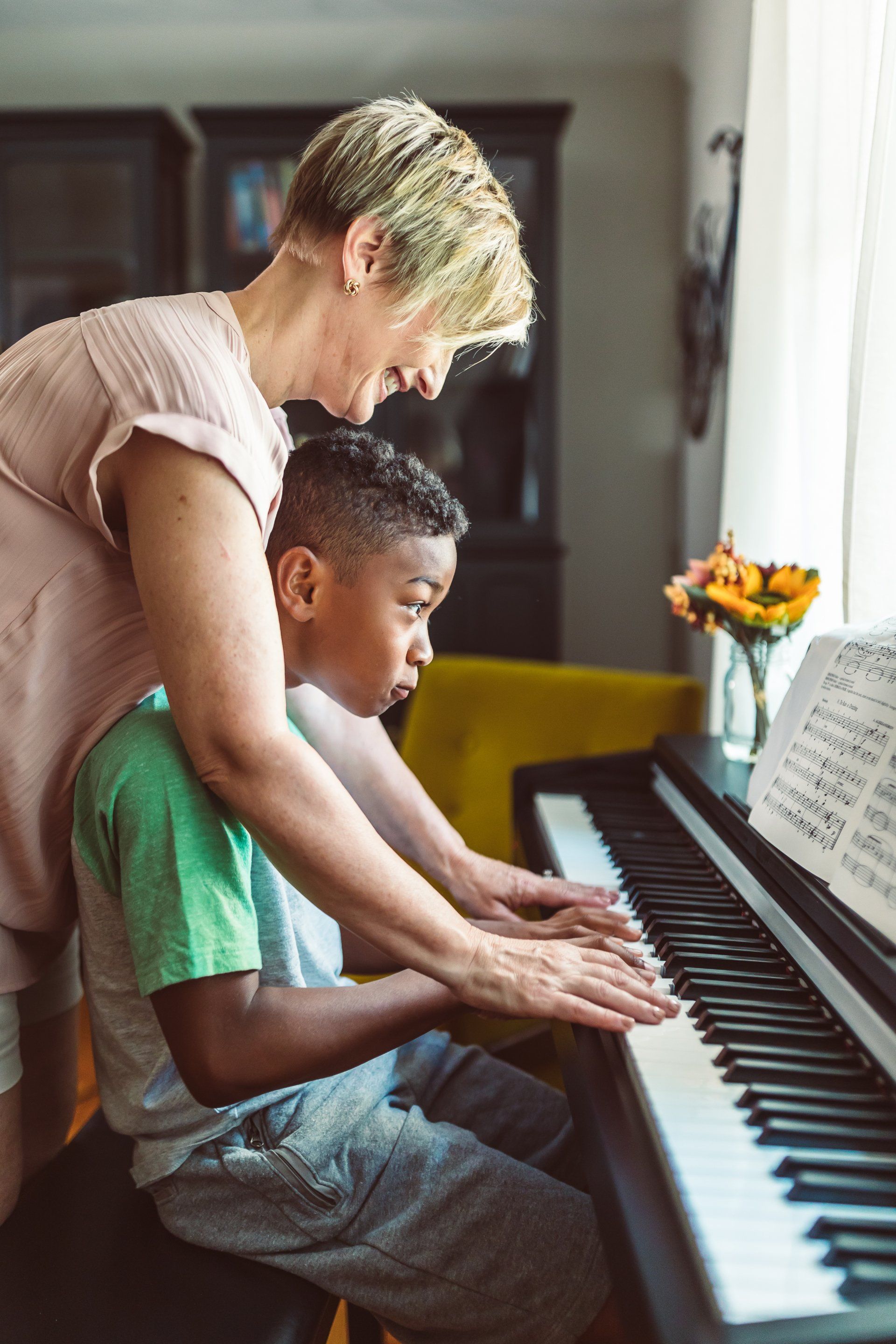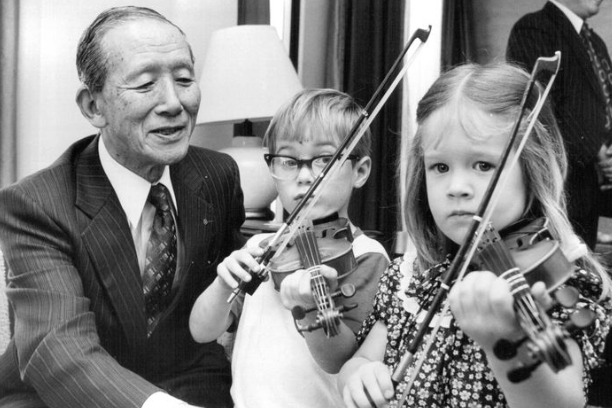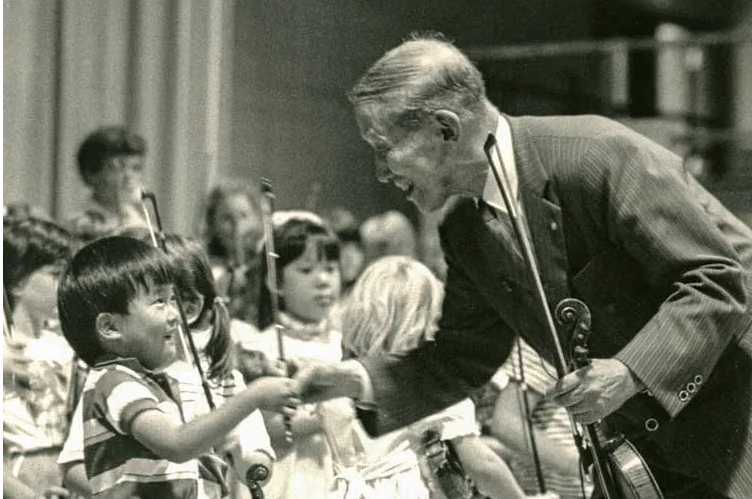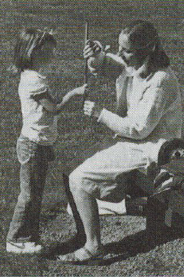Listening to Great Music
Listening to Great Music by Christine Goodner
The Suzuki method teaches children to play music the way they learn their native language. Think back to when your child first learned to speak. What kind of environment was around them that helped them learn to speak and understand their first language?
Likely they heard their parents, and many other people around them, speaking to them all day long. They were immersed in the language from the time they were born and they slowly, with practice, learned to understand and speak the language themselves.
Along these same lines, it is widely accepted that the best way to learn a new language, as a student or an adult, is to immerse yourself in the culture so you are surrounded by the language. In this way, new language learners learn to speak out of necessity to get around in their new surroundings.
Creating this same environment of immersion with great music can produce similar results for Suzuki students. Listening daily is one of the cornerstones of the Suzuki method for this very reason. Suzuki noticed that while he struggled to learn his second language, young children who grew up in the culture learned their native language with ease.
Many years later, we know from the field of linguistics that children’s brains are taking in information and making connections based on the language they hear from birth. Listening to great music, especially on the instrument your child is studying, helps give them the same sort of information to process what music sounds like and how they want their music to sound.
One of the basic assignments you will have as a parent is to play your child’s Suzuki recording for them each day. This is important for their development as a musician and will have a huge impact on how easily they will learn to play their instrument well.
Students I teach who listen to their Suzuki recordings regularly learn at least twice as fast as the students who do not do enough listening. When a student is struggling to make progress, this is the first question I ask. How much are you listening?
Student who listen enough have a clear picture in their heads of how the piece they are learning sounds. They can sing or hum the tune to the next section at any given point. They also have a clear picture of what a good sound is for their particular instrument and understand when further work is needed to improve it.
This inner knowledge makes learning new music so much easier and cuts back on frustration. Make listening on a daily basis a habit in your home from the start so your chid can have this advantage for learning music easily.
Make Listening a Priority
I hear from many families that it feels hard to fit listening in daily, or that it’s easy to forget to do it. As a parent myself, I understand there is a lot to fit into each day of your family’s life already. However, just realizing how important this habit is to your child’s success should help make this task a priority.
Besides practicing each day, this is the most important thing you can do. In fact, I would argue that it may be even more important than practice on any given day. Listening gives students motivation and a goal that can spur them on to practice and make learning feel more effortless. On the practice charts that my students take home with them from lessons each week, this task is on top of the list because I want them to see it as a top priority.
My colleague Lauren Lamont agrees: “Getting parents and students to listen to the recordings is sometimes difficult, but it improves their learning by one hundred ten percent!” She recommends fitting listening in whenever possible and to come up with listening games like listening for a specific note your child may recognize to keep them engaged.
Passive Listening versus Active Listening
When you first start lessons, it is likely that most of the listening your child is asked to do will be passive listening. That is, listening to the music as it plays in the background while your child is doing other things. For example, listening while playing, eating, riding in the car, doing homework, or any other everyday activity you can think of.
The music can just be played on a low volume so there is no need to sit and just listen with total attention.
As you child advances, they will likely be given more active listening assignments. For example, pulling out the sheet music for a piece they are working on and following along with the printed notes while they listen. Or, listening to a few different recordings of the same piece by multiple performers to hear all the different ways a piece can be played.
There are some things you can do to make listening more active even for beginning students. Creative movement, drawing pictures of what the music makes the child think of, and making up a story to go along with the music (or even lyrics) are great ways to get students to listen carefully and notice the style, speed and mood of pieces they are listening to.
Parent Jo-Anne Steggall has a great example of this: “Our youngest loves dinosaurs. She makes up her own lyrics to the recordings that all involve dinosaurs. It is so much easier to remember how it goes when she can sing some words that are meaningful to her.”
I shared in an earlier chapter that I used to march around the room to my Suzuki recordings as a child. Some of my students have come to lessons having made up their own song lyrics to a new piece they are learning. The ideas could go on and on. Use your creativity and your child’s interest to come up with ideas that work for you.
The Bigger Picture
If we want to learn anything new as adults, it is a good practice to find people who have already done it and to learn from them. That is the principle we are teaching our children as part of the bigger picture when we listen every day. Not only does listening teach students how their pieces sound and how their instrument, when played well, sounds, but it also teaching them to seek out someone who has learned something well before them to understand how it is done. We do this as adults by finding a personal trainer if we want to get in shape, or watching a video online, or reading a book or how-to guide. We don’t expect ourselves to learn how to do something without some guidance.
Your teacher will give you guidance at your lesson each week, but it takes daily guidance to do what we are talking about. Remember our language learning analogy: we won’t become fluent in a language we only hear modelled once a week.
My Own Children
I knew my own children were true Suzuki kids when I watched their approach to musical theatre in high school. As soon as the musical was announced for the next school year, they would go find the music. They went straight to the library (or online), got the music, and started listening to it over and over until the whole family could sing it — long before auditions ever took place.
I didn’t have to prompt them or suggest it. They knew this is how you easily learn new music: listen, listen, listen. It didn’t feel like a chore; they were excited to do it so they were prepared when auditions rolled around. Once the show started, it wasn’t stressful for them to learn any lyrics or music because they had listened so much. It was already ingrained in them by the time rehearsals started.
Practical Ideas for Fitting in Listening
So exactly how do families fit in their daily listening habit?
- Play the CD in the morning as children are getting ready for the day.
- Play it in the car as you are driving to and from various activities throughout the week.
- Play it at night as your children are falling asleep.
- Use it as a soundtrack while doing other activities like playing or reading.
- I heard about one family that required it as the background listening any time their child played video games, which is a great idea!
These days, our music can be easily put on our phones and other devices to be taken with us wherever we go. This is such an advantage. When I was young, we only had the Suzuki recording on a record player in my parents’ bedroom so I would hang out with them there at night to listen. We did it, but it sure wasn’t convenient like it can be today.
The families in my studio often have success if they have the habit of hitting play at the same time as another activity that happens each day, and is already an established routine. If you go to the kitchen to make breakfast and hit play each time, or every time dinner is being prepped the music comes on, it actually becomes hard to forget to do it. Find what activity you can group listening up with that works best for your family and make it a habit by doing it every day. Eventually, you won’t even have to think about it or remember to do it. It will become automatic, which is the best way to ensure it gets done. If listening is piggybacked on another activity, it is easy to make it a habit long-term.
As Children Get Older
The goal is that when our kids become teenagers, perhaps late teens, they will see the power of listening for themselves and will do this without prompting. It does usually happen for my students at some point. Over time, students start to realize how much easier it is to learn new music if they have listened to it first. Then they will start to be the ones driven to do the listening assignments themselves. I would recommend that you see it as a parent-driven activity until that happens.
Listening to Create a Mental Roadmap
One of the powerful things that happens when a student listens enough to a piece they are learning on the recording, their brain starts to form a clear picture of what comes next in the piece. This helps alleviate the struggle of learning the form of the piece, or how the pieces fit together. It takes out the guesswork and makes learning easier.
As a teacher, the difference between teaching someone who has listened enough and someone who has no clear idea of how a piece should go is night and day. There is a dramatic difference for beginners that becomes even more apparent as students progress in the repertoire. It always pains me to see a student struggle when I know the solution Is often as simple as more listening. I do understand that it is not always easy to form this habit, but it is such a simple way to make learning easy that it can’t be emphasized enough.
There are parts of learning a piece like the style, the mood, and what the piece sounds like when it is in tune that take a long time to explain one by one to students. Everything has to be broken down into small, incremental steps. If the student already understands these details through their listening assignments, then they already have a basic understanding of how these things happen in their piece, and we can just work on how to play the music well instead.
Parent and Suzuki teaching Jody Morrisette shared that her children light up when they begin a new piece and realize that they recognize the song already (from the recordings) and know what to expect. I have found the same to be true for students I work with.
Another teacher shared with me that younger siblings in her studio will often say they have already learned a piece they’ve heard a sibling play. They haven’t actually learnt how to play the piece on their instrument, but they feel they know it because of how much listening they have done. I can certainly say from experience that these siblings also tend to learn more easily because they understand how the piece goes inside and out.
I would state my recommendation for regular listening this strongly: to not listen enough to the recordings is to handicap a student and make it hard for them to be successful. I know it can feel like a chore to listen every day, but the effort it takes to make this happen daily is worth it!
Final Thoughts
The Suzuki method teaches very young students to play their instruments using the same principles by which they learned their native language. A huge part of being successful at this is knowing how a piece, or instrument, should sound in the first place.
Focus on becoming a family that listens to great music as part of your family culture. You have the opportunity to have a huge impact on your child’s ability to progress and feel confident learning new music by making sure this simple activity happens. Classical music doesn’t have to be your own favourite genre to listen to, but you can likely learn to appreciate it as you see all the effort your child puts into learning how to play their instrument.
One of the saddest things to me was a former student of mine whose parents rarely came to recitals, did not enjoy listening to her practice, and didn’t want any classical music played in the house because they didn’t like listening to it. The fact was, their daughter was really passionate about it — it was part of who she was. What kind of message does this send to a child?
Embrace the journey your child is on and who they are becoming through studying an instrument. Chances are if you listen to many different performers and styles, you will find one you can connect to as a parent and your child will certainly benefit from all the exposure to great music.
I think Suzuki flute teacher trainer Kelly Williamson sums up the importance of listening very well: “Without a doubt, the students who listen regularly to the reference recordings — and a variety of other music — are the most successful. They learn their pieces more quickly and more easily. They play with better intonation. They play with more expression and better phrasing; on the flute, even the quality of their articulation is affected because students who listen are thinking in lines, instead of note by note. They are motivated to learn future repertoire pieces because they have been looking forward to learning them for a long time. The students who do the best of all are the ones who, in addition to the above, are regularly taken to live performances by their parents. One of my students came to an orchestra concert the other day and had her picture taken with me right afterward in the concert hall — as her mom clicked the camera, I was conscious that this kind of experience is part of the ‘glue’ that helps to hold the whole vision together, and helps my student to see herself as a present and future musician.”
